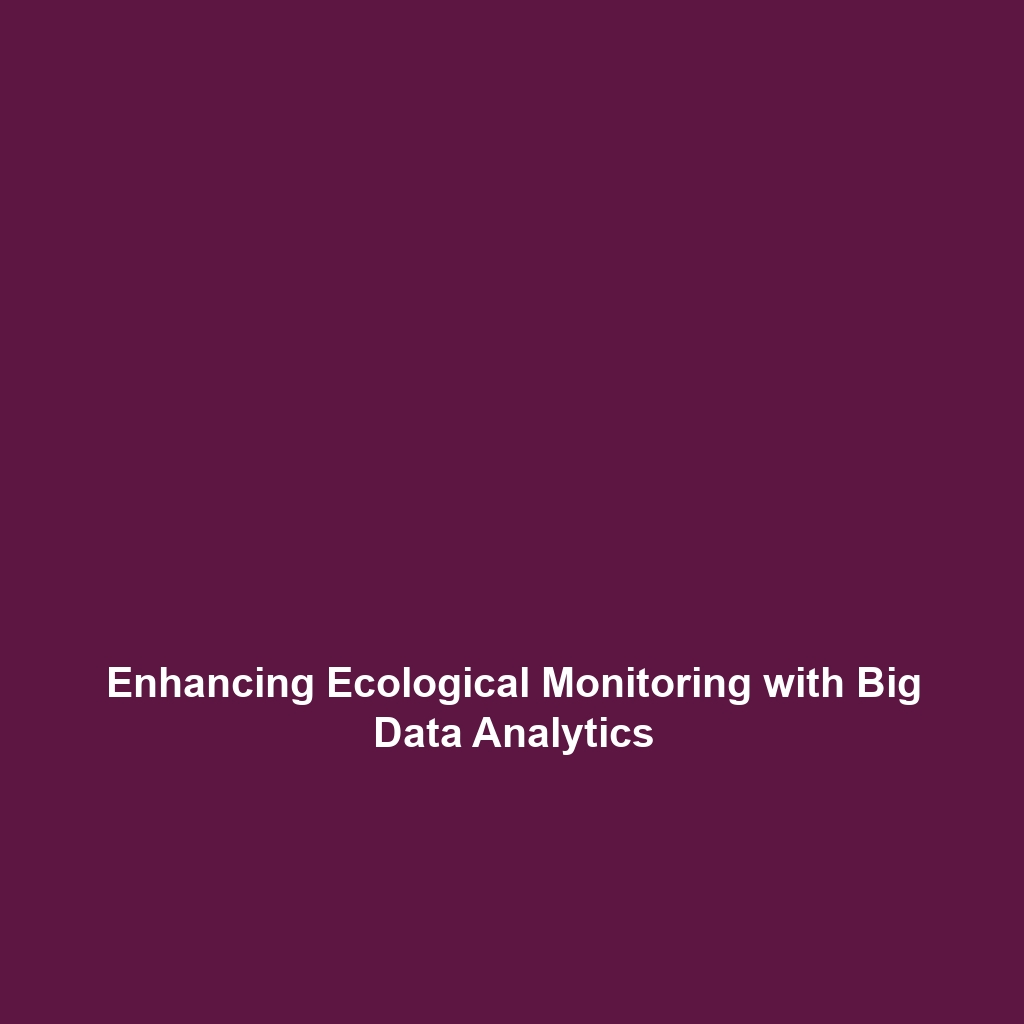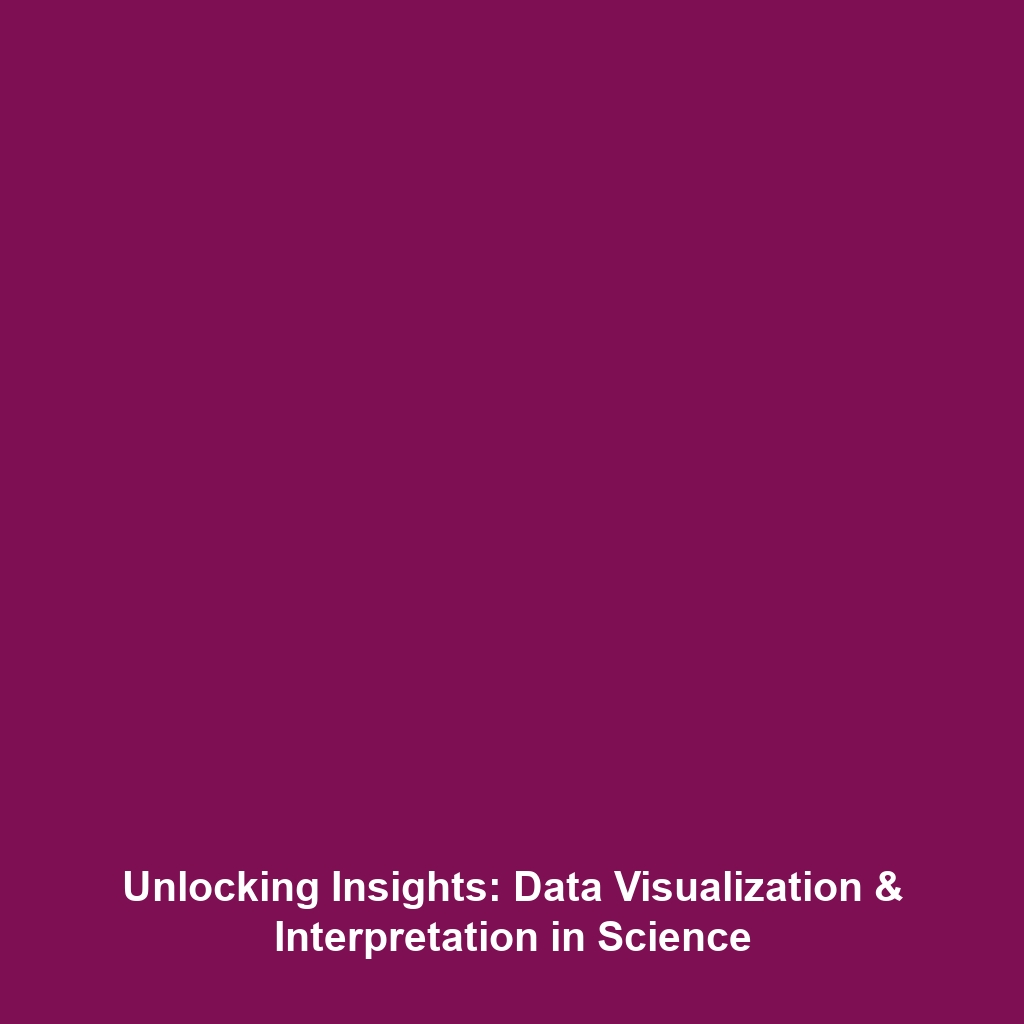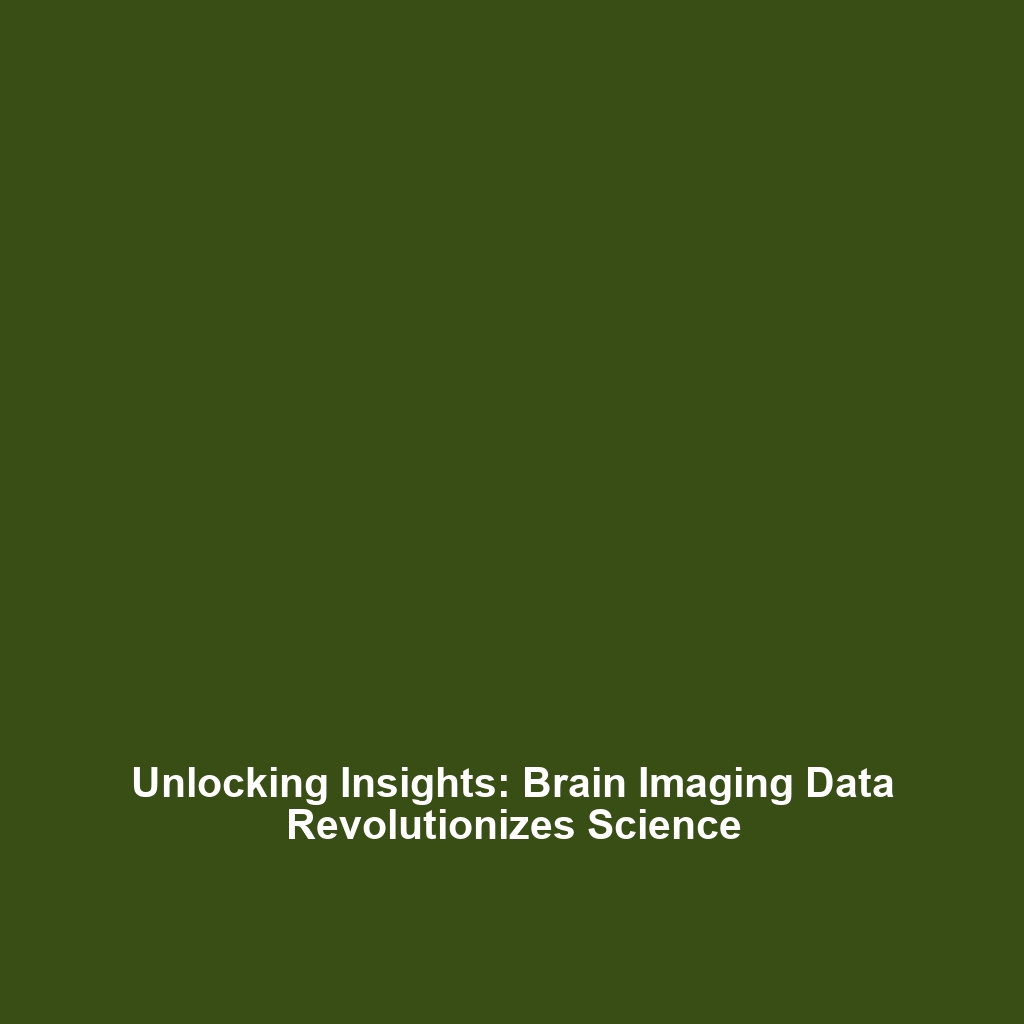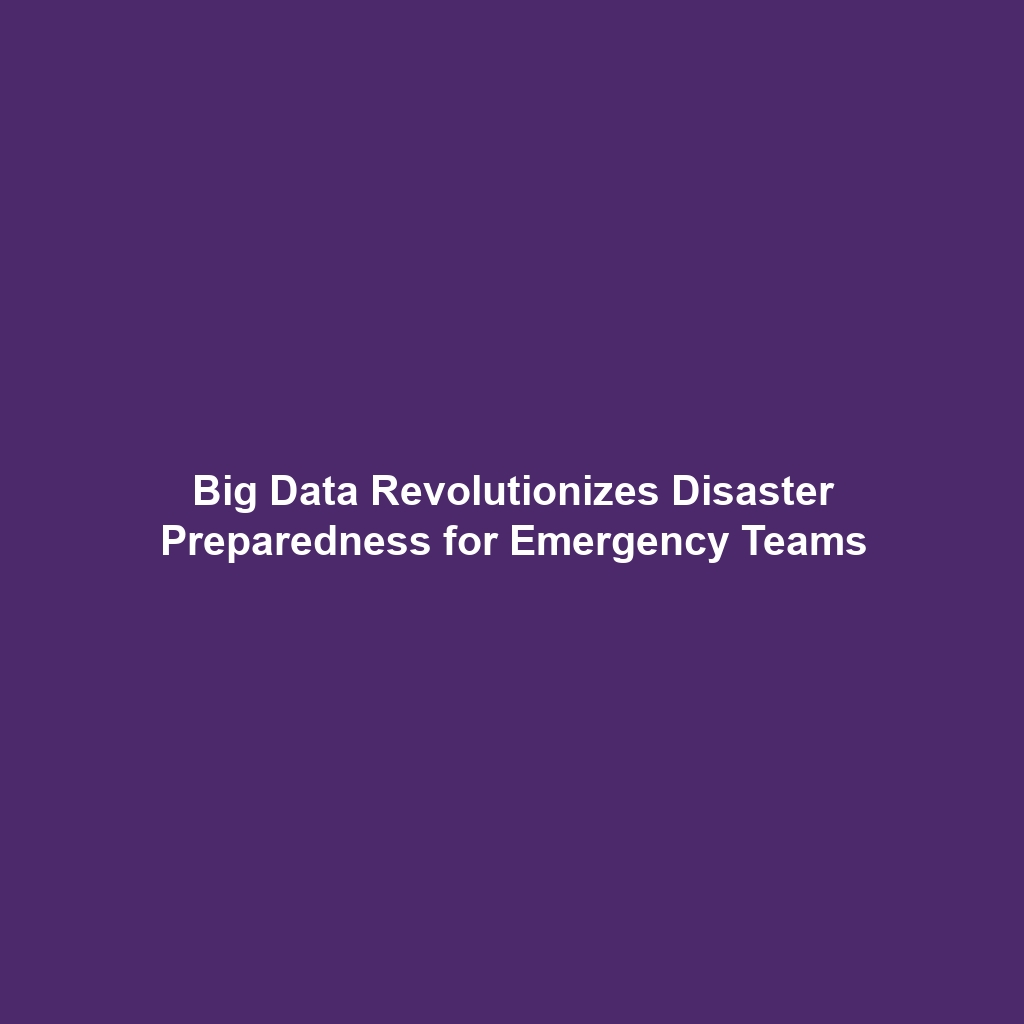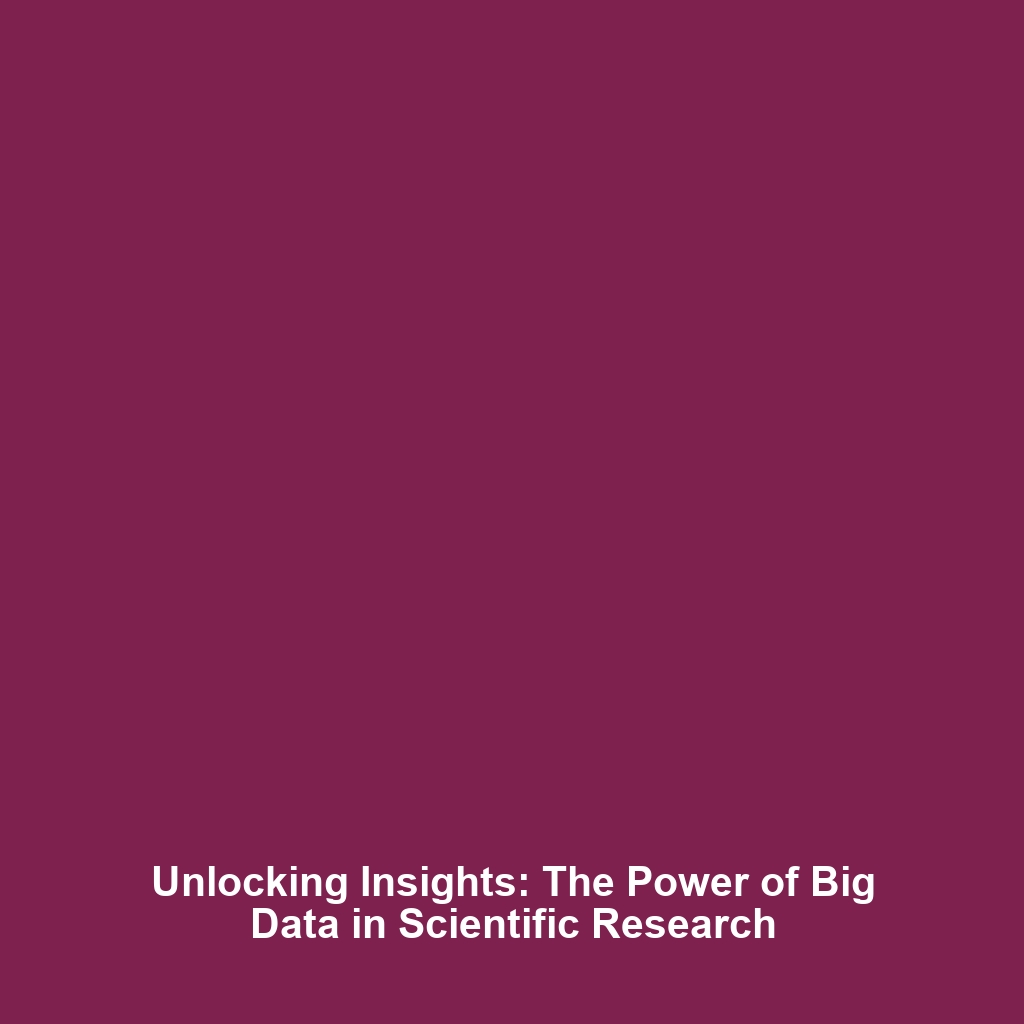Ecological Monitoring: The Intersection of Big Data and Science
Ecological Monitoring is vital for assessing environmental health and informing conservation efforts. The integration of Big Data analytics in ecological studies has revolutionized how scientists collect, analyze, and interpret vast datasets, making it possible to detect ecological changes with unprecedented accuracy. This merging of disciplines not only enhances research capabilities but also offers insights essential for sustainable management strategies.
Key Concepts in Ecological Monitoring
Understanding Ecological Monitoring within the Big Data framework involves several key concepts:
Data Collection Methods
- Remote Sensing: Utilizing satellites and drones to gather comprehensive environmental data.
- In Situ Measurements: Collecting data directly from ecosystems through sensors and field studies.
Data Analysis Techniques
- Machine Learning: Leveraging algorithms to predict ecological trends based on historical data.
- Geospatial Analysis: Mapping ecological data to visualize patterns and correlations.
By combining these techniques, Ecological Monitoring uses Big Data tools for real-time decision-making in environmental management.
Applications and Real-World Uses
The integration of Big Data into Ecological Monitoring has led to significant advancements in various practical applications:
How Ecological Monitoring is Used in Environmental Conservation
- Biodiversity Assessment: Monitoring species diversity to inform conservation strategies.
- Climate Change Studies: Analyzing impacts on ecosystems and tracking shifts in species distributions.
- Water Quality Monitoring: Using data analytics to manage freshwater resources effectively.
These applications exemplify the transformative impact of Ecological Monitoring in the realm of Big Data in Science.
Current Challenges in Ecological Monitoring
Despite the advancements, there are challenges associated with Ecological Monitoring within the framework of Big Data:
- Data Overload: Managing and processing vast quantities of data can be overwhelming.
- Integration Issues: Difficulty in combining datasets from different sources with varying formats.
- Funding Limitations: Insufficient resources can hamper extensive ecological research projects.
Addressing these issues is critical for enhancing the efficacy of Ecological Monitoring.
Future Research and Innovations
The future of Ecological Monitoring is poised for exciting innovations, particularly in the use of:
- Internet of Things (IoT): Utilizing interconnected devices to provide real-time ecological data.
- Artificial Intelligence (AI): Enhancing data analysis through predictive modeling and automation.
- Cloud Computing: Facilitating the storage and analysis of large datasets at scale.
These technological advancements will play a crucial role in shaping the future of Big Data in Science.
Conclusion
In summary, Ecological Monitoring is essential in leveraging Big Data to understand and manage our natural environment effectively. The applications, challenges, and future directions discussed highlight its relevance and potential. As research continues to evolve, staying informed about advancements in this field is crucial for scientists and policymakers alike. For more insights, explore our articles on Big Data Innovations and Sustainable Environmental Practices.
